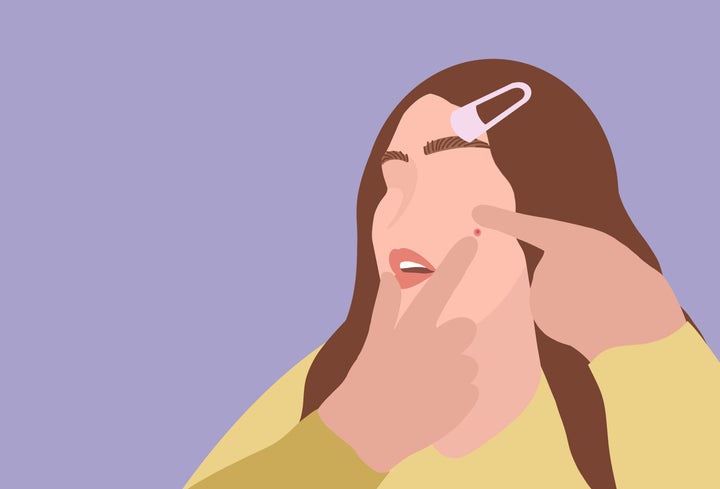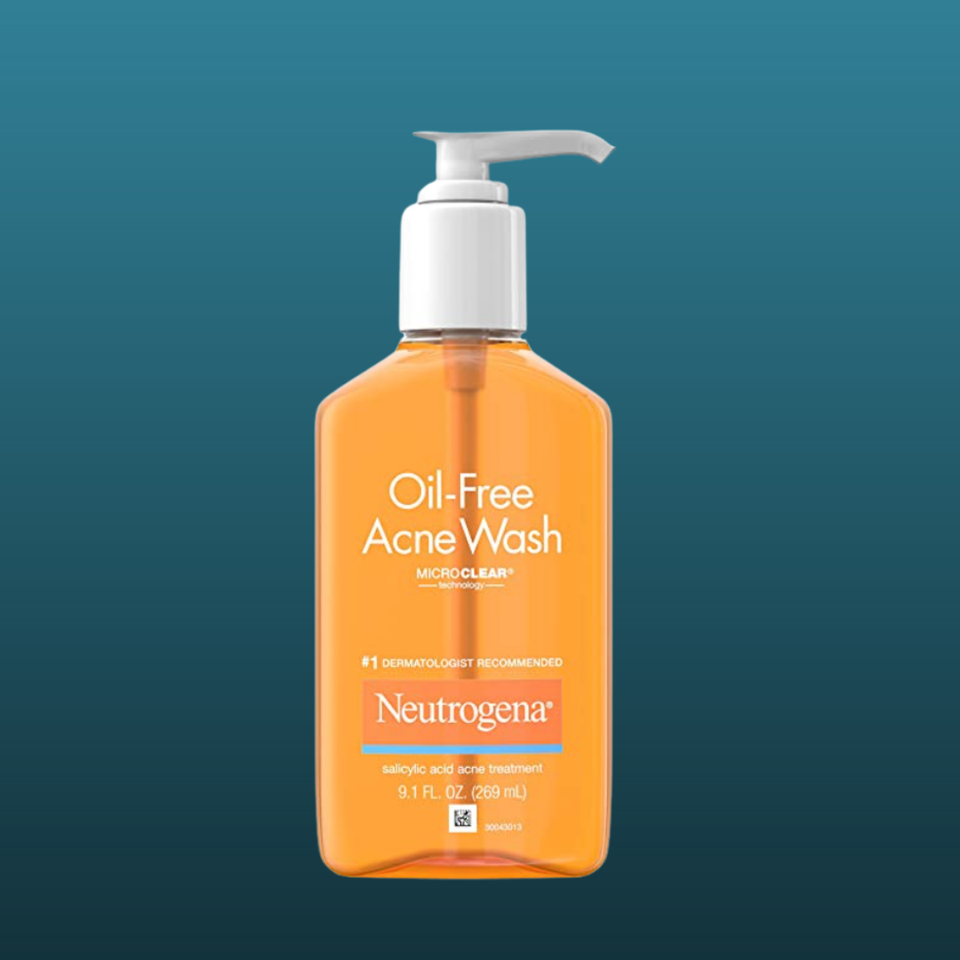
There are two kinds of people in this world: Those who admit to popping their pimples ― and liars.
It’s like using a Q-tip to clean your ears or taking aggressively hot showers. Even when you know it’s wrong — when actual doctors tell you it’s not good for you — you do it anyway. We all know you’re not supposed to pick at a zit. And yet we’ve all found ourselves in the bathroom, nose nearly pressed against the mirror, inspecting our skin for a blackhead we can make our next victim.
Despite how common the urge is to pick at your skin (or the desire to pop a zit so you don’t have to sport it out in public), skin experts agree: The best thing you can do for your skin is not pop your pimples.
“In general, most people are not doing it in an ideal setting,” said Katie Koss (a.k.a. The Skin Witch), a licensed esthetician in Jacksonville, Florida. “You go into the bathroom in a rush, and your hands aren’t clean and you start going at it,” she said. “You run the risk of putting more bacteria into the skin. If you’re not pressing on it correctly, you can push it deeper into the skin, which can make it more infected or more swollen, and it can look worse than when you went into the bathroom, which has happened to me.”
She added that picking at blemishes can cause scabbing or scarring, something Dr. Heather Summe, the associate chair of dermatology at New York City’s Lenox Hill Hospital, seconds. “Scarring is permanent and definitely something we want to avoid.”
To pop or not to pop?
If you’re standing in front of the mirror and thinking about going in for the kill, Summe recommends you take a beat and figure out what kind of blemish you’re dealing with. Open comedones, a.k.a. blackheads, are the easiest to extract, while closed comedones, or whiteheads, can be harder.
Summe and Koss agree that you should always leave inflamed blemishes or cystic acne alone. “Anything that’s inflamed or red really should not be popped,” Summe said. “I don’t even attempt to pop these in my office. I would rather do a steroid injection, which is really effective, antibiotics or just a spot treatment. You’re better off not touching those; they’re deep, and you’re just not going to get to them, and they’re more likely to scar.”
Pop as the professionals do
If you have somewhere to be later and your whitehead is not invited, both of these skin experts understand that most people in this situation will want to nix that zit. Though they still wish you wouldn’t, they did share their best advice for doing so safely to minimize the risk of infection or scarring.
Take a shower. “I would use a gentle cleanser and take a shower,” Koss advised. “Taking a warm shower can help soften the skin in a way that makes extractions easier. You could also use a warm, damp cloth just on the spot.”
Wash your hands and face. If you did this in the shower, great. If you skipped step 1, this step is nonnegotiable. Both experts say this is the best way to avoid introducing new bacteria into the pop zone, with Summe adding that she would apply a small amount of rubbing alcohol to the blemish to sanitize the area.
Soften the blow. Both Koss and Summe recommend wrapping some toilet paper, tissue or gauze around your fingertips before reaching for your face. This ensures your nails won’t dig into the skin and lead to scarring.
Press gently (and know when to stop). “From all different angles, kind of rotating, use a gentle pressure downwards and inwards. For the whitehead, you might need to take a sterile needle and make a tiny little poke very superficially at the surface, right in the middle,” Summe said.
“Press around the outside of it slowly with downward pressure,” Koss said. “The key is not to be aggressive. If something’s not coming up after trying a few times, get out of there. I do this with my clients, too, because I don’t want to traumatize the skin, so we abort mission.”
Do some post-pop aftercare. “I think it’d be a good idea to use a spot treatment,” Summe said. “Personally, I like salicylic acid or a hydrocolloid patch, which has the added benefit of keeping your hands off of the spot and provides a protective barrier.”
“Depending on inflammation, hold a cold compress or a few ice cubes in a clean towel on there,” Koss said. “Put a zit sticker or a hydrocolloid patch over it. It’s like an open wound at this point, and wounds heal well in a moist environment. If you don’t have those, use a little dab of antibiotic ointment, and then just leave it alone.”
Koss added that for people with dermatillomania — a mental health condition that causes repetitive picking at the skin — using these tactics can help reduce damage. However, she recommends addressing the behavior with the help of a therapist rather than relying only on hacks like these.
“My first memory is of picking a scab, so I’m a lifelong picker. I know how it is,” she said. “For my clients who deal with this, instead of picking, I tell them to try icing or cold-rolling zits, use pimple patches, keep the lights dim in the bathroom and throw away their magnifying mirror. If I have an urge to pick, I’ll do a sheet mask or spot treatment instead.”
That’s good advice for learning to be hands-off with any blemish, really.
